Longest & Shortest
This activity helps the parents to judge the ability of their children to judge sizes of objects.
Some children have problems in judging the size of an object. They find it difficult to identify things seen from different angles and in different environments. Some may find it difficult to read letters written in different fonts. These children have Visual Processing Disorder.
What is Visual Processing Disorder?
We see through our eyes and the images are sent as signals to the brain. The cells in the brain study the signals. This activity is called processing of information. If a child’s brain is not able to process the information received, then the child won’t be able see the objects the way in which others see. This difficulty in processing information received through the eyes is called Visual Processing Disorder or VPD. The problem has nothing to do with the ability of the child to see. A child with perfect vision can still have VPD. Many children with learning difficulties such as dyslexia and attention disorder (ADHD) may have VPD.
Symptoms of VPD
- Poor visual discrimination: The child would find it difficult to notice the differences in shape and size of objects. VPD may cause reversals of letters, writing b for d and d for b, m for w etc.
- Sequencing is a problem with children with VPD. They may find it difficult to understand the sequences of alphabets. They may have difficulty in remembering E comes after D or 9 come before 10. They may have difficulty in saying alphabets or numbers backward. If you ask a child with VPD what comes after the alphabet G, the child may have to recite from A to H to tell the answer. Poor visual sequencing memory is a symptom of VPD. These children have problems with maths. Geometry may be a difficult subject for them as they have to see different shapes and they have to draw geometrical shapes to exact measurements/specifications.
- Children with VPD may find copying from the board a difficult task. They may miss lines while copying. Lack of spatial intelligence is another problem. They may not be able to judge the speed of a ball, or the speed of a vehicle. They may have difficulty in playing cricket, volleyball, football or badminton. They may have poor visual memory. Recognising faces, recalling images etc would be very challenging for them.
- Some children with VPD may not be able to make sense of parts of pictures. A face partly hidden or an image with some parts missing won’t be enough to imagine the whole picture. They may have difficulty in doing written work like fill in the blanks, or answering “What comes next “questions.
Is there any cure for VPD?
Unfortunately, there is no cure for VPD but remedial measures over a period of time can reduce the intensity of the disorder.
In this activity, three images are shown. The player has to identify, as per the instruction, the longest or the smallest or the largest out of the three.
Tips for you, the parents:
You can use multisensory (use of touch, movement, sight, hearing) exercises at home if your child has VPD. There are plenty of activities which your child can do at home that can help her/him to fight VPD. Remedial measures suggested below involve learning through touch (tactile) and movement (kinesthetic). The research done in the field of learning suggests that a multisensory approach promotes better learning. Learning by touch and movement has positive and beneficial effects on visual and auditory systems. In other words, to improve the visual perception we can emphasise tactile and kinesthetic learning.
- Finding difference in size through touch and movement. Start with objects having big difference in size.
Example:
- Footwear of grown-ups and children. The child may be asked to sort the shoes or slippers according to their size. This is an activity where kinesthetic (movement), tactile (touch) and visual senses come into play.
- At home, you are likely to have partially used pencils of various sizes. You can ask your child to arrange them in order- the longer ones first and so on. It would be better if this activity is done with eyes closed and the pencils can be kept in a bag. The child learns by the movement of the hand and by touching and guessing the length of the pencils.
- Vegetables- tomatoes, onions, potatoes all come in different sizes-offer you a good chance to test your child. You can keep some vegetables in a bag. Ask your child to keep her/his eyes closed and feel the vegetables. Ask your child to name the vegetables. Another activity is to keep four or five onions in a bag. This activity is best done with eyes closed. Ask the child to take out the biggest onion from the bag. Continue the activity and the last one to be taken out would be the smallest of the lot.Ensure that there are sufficient differences in the size of the onions. You can think of many other similar activities for your child.
- You can use dough made for rotis to help your child learn about sizes. Ask your child to make similar size balls with the dough.This is a good activity which stimulates visual, kinesthetic and tactile senses. Better motor coordination also takes place.
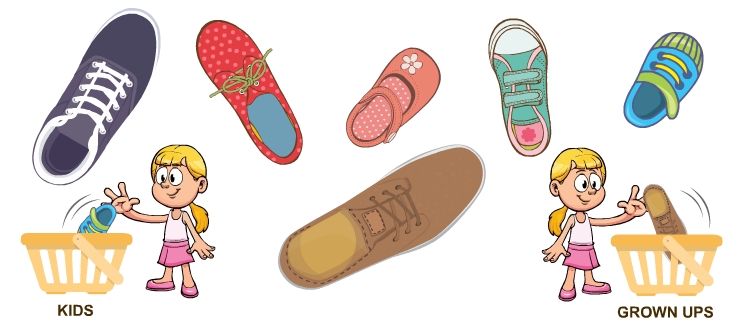
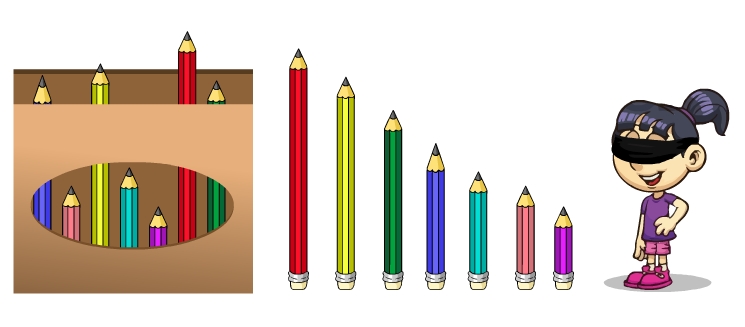

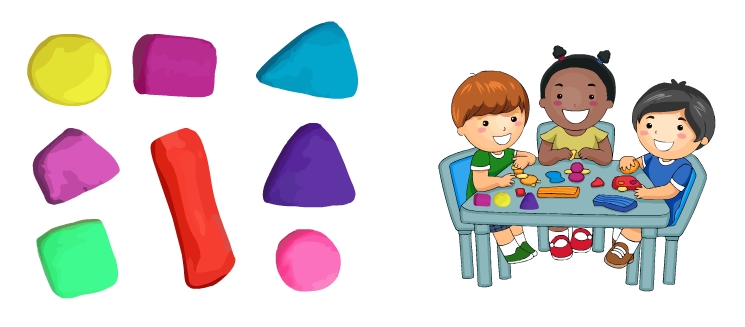
-
- Give a piece of paper and ask the child to cut out shapes having the same size.Ask him to draw lines of different sizes in different positions- vertical, horizontal, slanting towards left, slanting towards right, and ask your child to grade the lines according to length.
The child can measure the length of the line using thumb and middle finger. (Kinesthetic learning).This activity is best done with a board because it gives a larger area to do the activity.
- The child can experiment with different font sizes. Ask your child to draw different sized letters. The activity can be repeated with shapes – circles. triangles or rectangles. A white board with different ink pens can be used for many activities to overcome VPD. Writing on sand different sized letters or words or drawing different sized objects can be a good learning experience because this is a kinesthetic/tactile and visual form of learning. In sand, the child can write with big arm movements. These activities also promote visual memory.
- Pictures can be used to test your child. Pictures of flowers, fruits, leaves can be used. Pictures in newspapers and magazines can also be used. You can gather leaves of different sizes to do this kind of activity. Similarly flowers and seeds can also be used.
- If your child has problem in identifying the same objects shown /seen in different contexts, your child may have visual form constancy. For example, your child can understand what shoes are but show a sheet of paper having many objects including shoes and ask the child to identify the shoes she/he may fail to do so. A child who can identify alphabets but has difficulty in identifying the alphabets in different positions – upside down, sideways etc- may have visual form constancy. You have to be patient and repeated visual based activities are needed to help your child.
- If your child finds it difficult to judge distances or has difficulty in judging the speed of a vehicle then she/he may have problem with visual-spatial intelligence. Repeated exercise in judging the distances will have to be done to get over this problem. You can play this game with your child. Draw a line and this would be the base position.It is enough you have a base position and if this is clear to the child then there is no need to draw a line.Keep three chairs at different distances from the base position. The child has to hit the chairs by throwing paper balls. Another variation for this game is to throw the paper balls into two or more baskets kept at different distances from the base position. You can also use buckets. The whole family can participate and have fun!
- Another activity which can be performed at home is to ask your child to close the containers with their lids or tops. In the kitchen we usually have plastic or steel boxes/containers and they different sized lids. Matching the container to their lids is a good activity. If you have several bottles in with different sized caps, then ask your child to close all the bottles. This can be done once in a week or so because doing it too frequently results in the child becoming too familiar with the boxes and lids.
- If your child is above 10 years you can make her/him assist you in the kitchen. Cutting vegetables (don’t give the child too sharp knives) is a good activity. These activities would also help in gaining better fine motor controls.Ask your child to roll rotis. It helps the child to learn about sizes.It is also a good bilateral activity. Activities performed with both hands help the left and right brain to communicate to each other.
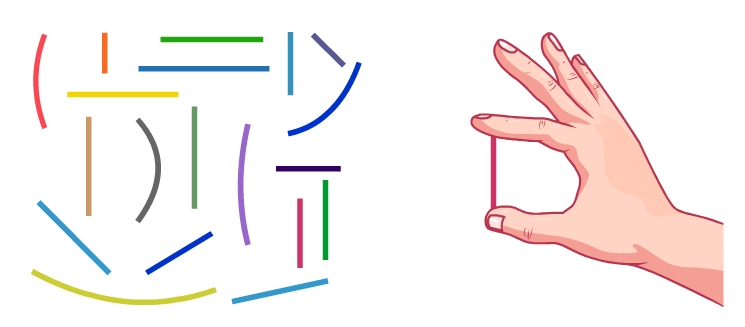
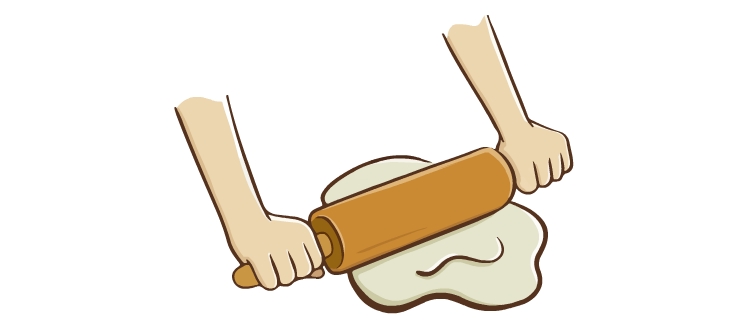
- Give a piece of paper and ask the child to cut out shapes having the same size.Ask him to draw lines of different sizes in different positions- vertical, horizontal, slanting towards left, slanting towards right, and ask your child to grade the lines according to length.
- Take advice from an occupational therapist. The occupational therapist can assess your child and suggest remedial measures.
- The internet is a good resource. Search: worksheets for identifying objects with the same size.
- It is useful to buy a board. Draw pictures of squares with different sizes and require your child to mark the shapes according to their size. You can also use objects of different sizes, for example beads, marbles, pebbles, different size bottles, spoons etc, to understand difference in sizes.

